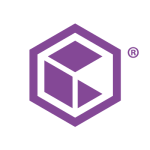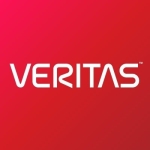What is our primary use case?
We use Zerto for real-time replication of our systems, company-wide. The main reason is disaster recovery failover.
How has it helped my organization?
We use the long-term retention functionality, although it is not deployed system-wide. We have a lot of critical systems backed up, such as our file servers. We utilize it to hold things for up to a year and we send our long-term retention to ExaGrid appliances.
When we need to failback or move workloads, this solution has decreased the time it takes and the number of people involved. The entire process is, realistically, a one-person job. We usually have an application specialist involved just to validate the health of the server. Whether it's an SQL server or application server, we have somebody that runs integrity checks on it. That said, the entire process is very painless and easily handled by one person.
I estimate that this product saves us hours in comparison to products like Veeam. Veeam would take several hours of time to fail something over.
Our company fell victim to a ransomware attack that affected between 50 and 60 servers. Until we knew for sure that the entire situation was remediated and that we weren't going to spread the infection, we restored the servers in an offline manner, which only took a matter of minutes to complete. Then, we pushed all of that data into Teams and OneDrive directly for people to start accessing it.
From the SQL server perspective, we failed those servers over, running health checks such as anti-virus scans, just to make sure that the failed over instance didn't contain the same situations. Thankfully, they did not. We probably saved ourselves several days worth of work in the grand scheme of things. In total, it potentially would have taken weeks to resolve using a different solution.
I wouldn't necessarily say that using Zerto has meant that we can reduce the number of staff in a recovery operation. However, I think it's probably mitigated the need to hire more people. Essentially, as we've continued to grow, we've avoided adding headcount to our team. Using Veeam as my problem child to compare against, if we were using it, it would have required a lot more management from us. It would have cost us more time to recover and manage those jobs, including the management of the ExaGrid appliances, as well as the VRAs, which are basically proxies.
Definitely, there is a huge saving in time using Zerto and although we didn't reduce any headcount or repurpose anything, we've definitely mitigated at least two people from the hiring perspective.
Zerto saved us considerable downtime when we experienced the ransomware attack. It may be hard to substantiate that just on the one situation but we saved at least a couple of million dollars.
What is most valuable?
The most valuable feature is the continuous recovery with the five-second checkpoint interval. Just having those checkpoints prior to when a situation arises, we're able to get the transactional data that occurred right before the server failed. That has been a blessing for us, as we are able to provide a snapshot with no more than five seconds of data loss. This means that we don't have to recreate minutes or hours worth of data for an industry that includes fulfillment, shipping, warehousing, et cetera.
Zerto is very good at providing continuous data protection. It does a very good job keeping up with the system and it creates five-second interval checkpoints. This has been helpful when it comes to needing to fail something over, getting that last moment in time that was in a usable state.
This product is impressively easy to use. It's dummy-proof, once it's set up.
What needs improvement?
The long-term recovery is a little bit weak in its granularity. Veeam is definitely superior in that aspect, as it's able to provide a granular view of files and databases, et cetera. However, it just kind of depends on what a business' recovery strategy is.
From our business perspective, it's really not impactful to us because our recovery strategy is not based on individual files. But, I could definitely see it being a challenge if there is a very large instance of individual files, as a subset, that need to be recovered. I think that if somebody has terabytes of data then Zerto will recover it faster but navigating through the file explorer to get to files is not as easy with Zerto.
One thing I don't like about the product, and I know this is where their claim to fame is, but whenever I have a VPG that has multiple virtual machines in it, and one virtual machine falls behind, it'll pause replication on everything else in that job until the one server catches up. The goal is to keep symmetric replication processing going, so the strategy makes sense, but for our business model, that doesn't really work and it has created a challenge where I have to manage each VM individually. It means that instead of having one job that would cover multiple servers, I just have one job to one server, which allows me to manage them individually.
For how long have I used the solution?
We have been using Zerto for approximately five years.
What do I think about the stability of the solution?
From a company perspective, a few years ago, I would have said that it is very stable. It is a solution that is thriving and growing. At this time, however, HP is in the process of acquiring them. While I had assumed that was their long-term plan, I didn't quite anticipate HP being the one to pick them up. As such, I am a little bit worried about what will change in the long term.
What do I think about the scalability of the solution?
Scalability-wise, it's a very painless product. As we continue to grow out our virtual environment, Zerto is able to, in a very nimble fashion, scale with us with very little effort or overhead involved.
I'm covering approximately 400 VMs currently, which is approximately 360 terabytes worth of data. That is between two separate data centers.
How are customer service and technical support?
Rating the Zerto technical support is a little bit tough because I've had some experiences that were truly 10 of 10, but then I've had one or two experiences where it was definitely a two or a three out of 10. It really depends on who I've gotten on the phone and their level of, A, comfort with their own system, and B, comfort helping the customer.
Some people have said this isn't within their scope of work, where others have said, "No, let's absolutely do this." In that regard, it's been a little hit and miss, but it's usually been a decent quality in the end.
Overall, I would rate the technical support a seven out of ten.
Which solution did I use previously and why did I switch?
I have worked with Veeam in the past and although I prefer Zerto, there are some advantages to using Veeam. For example, long-term recovery offers more features.
In-house, we had also used the Unitrends product, as well as a SAN-to-SAN replication using an old HPE LeftHand array.
The main reasons that we switched to Zerto were the management ability, as well as its ability to provide continuous replication. Veeam was a very cumbersome product to manage. There were a lot of instances to monitor and manage from a proxy perspective, whereas Zerto's VRAs are relatively transparent in their configuration and deployment. These are painless and I don't have to continually monitor them. I don't have to update them since they're not like standalone Windows instances. It's very low management for us.
Of course, continuous replication is critical because Veeam, even though when we had owned the product, it claimed 15-minute intervals were doable, it never seemed to actually keep up with those 15-minute snapshot intervals.
One final reason that we migrated from Veeam is that they were utilizing VM snapshots at the time. I know that they've moved away from that approach now, but it was very painful for our environment at the time. The VMware snapshots were causing some of our legacy and proprietary applications to fail.
How was the initial setup?
The initial setup is very simple.
Our implementation strategy involved setting it up for our two data centers. We have a primary and secondary data center, and Zerto keeps track of all of the VMs at the primary site and replicates them to the other site.
In the future, we plan on looking into the on-premises to cloud replication. On-premises to Azure direct is on our roadmap.
What about the implementation team?
I completed the setup myself without support or anybody else involved in the deployment.
It took approximately an hour to deploy.
I handle all of the administration and maintenance. As the senior manager of infrastructure, I oversee our work and server group. I have also retained private ownership over the disaster recovery plan and failover plan.
What was our ROI?
We have probably not seen a return on investment from using Zerto. We don't really have lots of situations where we have to use it and can substantiate any kind of financial claim to it.
What's my experience with pricing, setup cost, and licensing?
I do not like the current pricing model because the product has been divided into different components and they are charging for them individually. I understand why they did it, but don't like the model.
Our situation is somewhat peculiar because when we bought into it, we owned everything. Later on down the road, they split the licensing model, so you had to pay extra for the LTR and extra for the multi-site replication. However, since we were using LTR prior to that license model change, they have allowed us to retain the LTR functionality at our existing licensing level, but not have the multi-site replication.
Which other solutions did I evaluate?
We have not evaluated other options in quite a long time. We very briefly evaluated Rubrik.
What other advice do I have?
When we first decided to implement Zerto, it wasn't very important that it provides both backup and DR in one platform. In fact, realistically, even now, while we have it and we used it on a limited scope, I'm not sure that it's needed.
With respect to our legacy solutions, I'd say that the cost of replacing them with Zerto is net neutral in the end.
My advice to anybody who is considering Zerto is that it's an awesome product and it won't steer them wrong. That said, there are some issues such as the licensing model and the situations where VPGs falling behind suspends the replication. Overall, it is a good product.
I would rate this solution an eight out of ten.
Which deployment model are you using for this solution?
On-premises
Disclosure: PeerSpot contacted the reviewer to collect the review and to validate authenticity. The reviewer was referred by the vendor, but the review is not subject to editing or approval by the vendor.

















